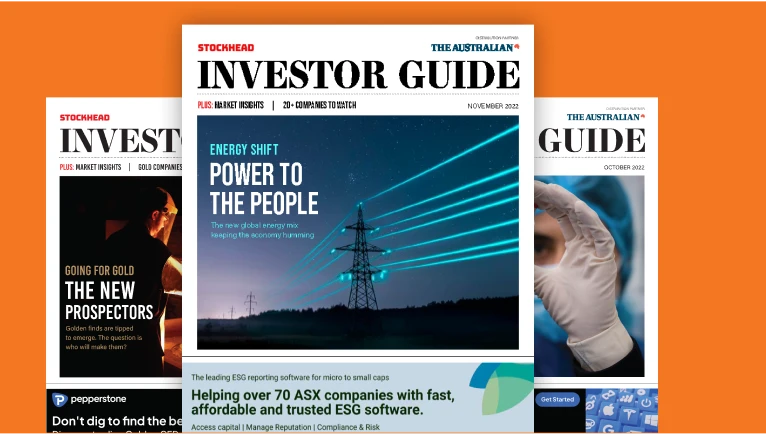Why graphite could be the first battery metal to bounce back

Battered and bruised, experts think graphite could bounce back off the canvas. Pic: Getty Images
A dive in lithium prices has cast a shadow over the battery metals industry in 2024, but other commodities linked to the energy transition have also hit a wall. Yet signs are pointing to a recovery in at least one of the under water metals, writes Kristie Batten.
It’s been another year to forget for lithium but spare a thought for long-suffering graphite.
Despite being touted as one of the “critical minerals” essential for the energy transition, specifically lithium-ion batteries, graphite prices are currently at eight-year lows.
Like rare earths, China controls around 98% of the graphite market.
Fastmarkets principal consultant Amy Bennett recently described graphite demand as “sluggish and disappointing”, but said the true negative impact on pricing was coming from the supply side.
“Natural graphite prices have been coming under intense pressure from unrelenting competition from the synthetic graphite sector, with massive capacity increases in China and price cutting for market share, making it incredibly difficult for natural graphite producers to compete in the market,” she said on a webinar.
“The one bright spot in the market has been Europe, where the graphite market has enjoyed price premiums this year, reflecting geopolitical concerns and higher freight rates and indicating an emergence of ex-China market premiums, which is something that the market has really been looking for, so this is a positive development.
“However, overall, we’re seeing prices below operating costs for both new and existing producers, which is clearly an unsustainable situation, and we believe, as a result, prices are at or near a pricing floor.”
Demand to improve
Graphite is the most widely used anode material in batteries.
“It’s the anode of choice for the battery industry,” S&P Global Intelligence principal analyst, metals and mining Gavin Montgomery said on a webinar last month.
“For the time being, we don’t see another material that will replace graphite.”
However, most of graphite’s demand still comes from the steel sector – at least for now.
“The baton for graphite growth will really pass to the battery sector where anode material will drive a second rapid growth phase for this industry,” Montgomery said.
S&P forecasts graphite demand from the battery sector to grow at a compound annual growth rate of 26% between now and 2028.
Montgomery warned that synthetic graphite would continue to dominate.
“However, it will still require quite a strong supply of natural graphite feedstock to meet that EV rollout,” he said.
S&P expects natural graphite will be the first battery material to enter a deficit, expected from 2026.
Shots fired
The base case forecast of the experts may have just been turned on its head after news out of China last week.
The main point to make headlines was China’s ban on the export of gallium, germanium and antimony to the US, but the Chinese Ministry of Commerce also requested stricter review of end use for graphite items shipped to the US.
“The announcement stands out due to its immediate implementation, leaving US companies that directly source material from China without time to stockpile and buffer potential supply chain disruptions,” Benchmark Mineral Intelligence senior analyst Tony Alderson said.
Macquarie said previous regulations on graphite exports, announced by China in late 2023, had only a limited impact on the market balance as leading synthetic graphite producers had obtained export permits.
“We believe the restriction could reignite the concerns of supply security, improving market sentiment on ex-China critical minerals companies,” analysts said.
Kingsland Minerals (ASX:KNG) managing director Richard Maddocks described the announcement as “very, very significant”.
“Because right now, you can’t get processed graphite from anywhere else, so it’s a first shot in the trade wars,” he told the Resources Rising Stars Summer Series last week.
“This trade war with critical minerals is just heating up. With these export controls coming in from China, we expect to see that [graphite] price kick up, I imagine, as people who want to produce batteries outside of China will be looking for other sources of graphite.”
What about equities?
While potential relief is too late for Walkabout Resources (ASX:WKT) , the Tanzania-focused producer which called in administrators last month, Macquarie sees the graphite companies under its coverage, Syrah Resources (ASX:SYR) and Talga Group (ASX:TLG) , as benefitting.
There is no current graphite production in Australia.
Most of graphite’s supply growth is forecast to come out of east Africa, but there are several companies with advanced deposits in Australia.
Kingsland holds Australia’s largest graphite deposit, Leliyn in the Northern Territory, which has a resource of 194.6 million tonnes at 7.3% total graphitic carbon and an exploration target of 700Mt to 1.1 billion tonnes at 7-8% TGC.
Leliyn, which is expected to be a low-strip ratio open pit, is only 250km from Darwin port.
Kingsland recently formed a strategic partnership with Quinbrook Infrastructure Partners to look into developing downstream processing capacity in Darwin.
“I think we’re very attractive to companies who want to buy graphite products to make them into spherical graphite for their batteries,” Maddocks said.
Renascor Resources (ASX:RNU) holds Australia’s second-largest graphite resource and the largest graphite reserve outside Africa at its Siviour project in South Australia.
Siviour is shovel-ready and has a post-tax net present value of $1.5 billion.
Renascor has also lined up a $185 million conditional loan from the Australian government’s Critical Minerals Facility.
Renascor managing director David Christensen said the timing of a final investment decision depended on technical, regulatory and financial factors though the company had largely achieved the former two.
“On the financial side, we’re not there yet but we’re close,” he said last month.
Christensen said the company expected to be at the “front end of the queue” in terms of global graphite projects.
Meanwhile, International Graphite (ASX:IG6), which owns the Springdale project in Western Australia, has established a research and development facility and qualification-scale process plant in Collie.
With the help of $13.2 million in state and federal grants, the company is aiming to open a commercial micronising plant next year.
The company is aiming to bring Springdale into production in 2026.
And Lithium Energy (ASX:LEL) and Novonix (ASX:NVX), the latter a synthetic graphite hopeful in the US, are aiming to progress the IPO of Axon Graphite, merging two high-grade resources in North Queensland.
At Stockhead, we tell it like it is. While Kingsland Minerals, Renascor Resources and Lithium Energy are Stockhead advertisers, they did not sponsor this article.
Related Topics

UNLOCK INSIGHTS
Discover the untold stories of emerging ASX stocks.
Daily news and expert analysis, it's free to subscribe.
By proceeding, you confirm you understand that we handle personal information in accordance with our Privacy Policy.








